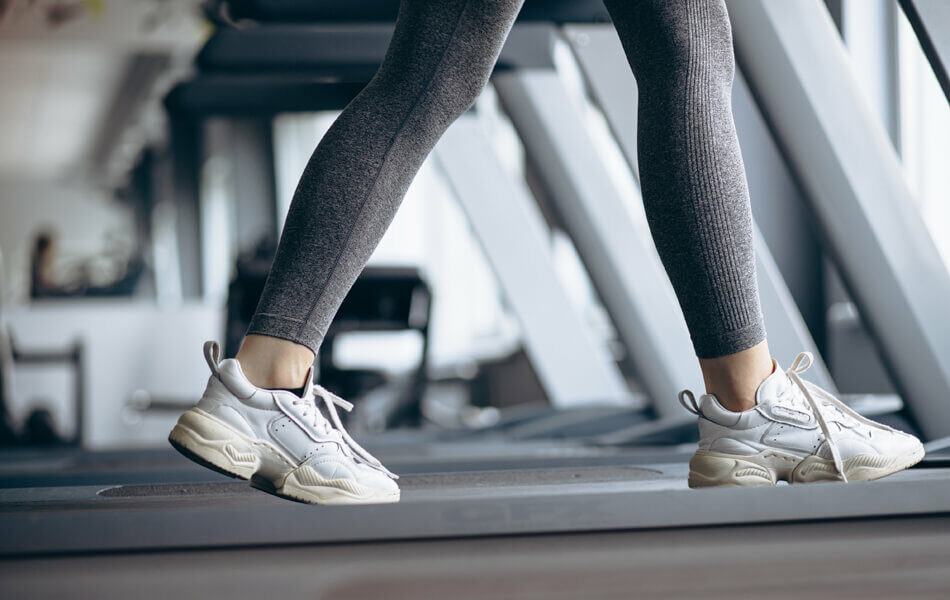Does Walking Build and Tone Muscles?
Building muscle mass and toning muscles fall under the size increase category.
So, the question we look to address today pertains to whether or not walking will help you build and tone muscles.

Have you ever sat to think about any physical activity that lets you grow your muscles effortlessly? Well, on that account, you would not be the only one.
Countless people seek ways to build and tone muscles while improving their cardiovascular system with little to no stress whatsoever. Through their search for answers, a good amount of them has come to ask if walking does build muscle.
We heard all about it and decided to conduct a proper investigation and unearth the truth. So, take a walk with us as we look to see if you can build muscle if you walk.
Does Walking Build Muscle?
Putting it straightforward, yes, walking will result in muscle building, but not how you have always pictured it.
Regardless of the type of aerobic exercise you engage in, the intensity of the exercise matters most if it pertains to muscle building.
That is because when you exert a certain stress level on your muscle fibers, they break apart, and when they heal up, they do so stronger than before – breaking down muscle fibers and building them up leads to growing bigger and stronger muscles.
Scientifically, this process comes in three parts: mechanical tension, muscle damage, and metabolic stress; getting the balance right will lead to muscle hypertrophy. In that regard, resistance training has become a mandatory practice, especially for those into aerobic exercises.
Taking sample data from different types of athletes, such as hikers, marathon runners, mountain climbers, and other long-distance athletes, you can see the variation in muscle mass between them. It certainly does not come from brisk walking.
Still, the muscle mass acquired is relatively small regarding walking. So even when you increase the intensity of your walks by walking on rougher terrains or walking on an incline on your treadmill, the results are still the same – you only pack on lean muscle mass.
Therefore, the more prominent markers of your intense walking workout revolve around body fat loss and building lean muscles.
Which Muscles Are Working While Walking?
Walking targets the muscles in your lower body, especially the slow-twitch muscle fibers. These muscles include the hip adductors, glutes, quadriceps, hamstrings, and calves.
Your upper body muscles get very little involvement, except for the elbows, flexor muscles in the shoulder, and extensor muscles of these joints. But then again, your core muscles experience significant changes with this exercise.
Regardless, let us take a keen look at the muscles engaged when participating in this cardiovascular activity.
- Quadriceps: Your quadriceps have 4 different muscles working closely together to extend your knee when walking. They also help flex the hip, which raises the foot off the ground and prevents you from tripping.
- Hamstrings: The muscles that make up your hamstring work together to bend the knee of the leading leg as you walk forward.
- Glutes: The gluteal muscles are the largest muscle mass in the entire body and, in conjunction with the hamstring, help rotate the hip of the rear leg as you walk forward. The gluteal muscles and the hamstrings receive even better stimulation when walking on an incline.
These muscles also help stabilize your body by pulling the legs sideways and controlling the pelvis’ position. This allows you to maintain balance, especially when most of your weight settles on one leg.
- Calves: The calf muscles are somewhat of a powerhouse, providing much-needed power in propelling you forward as you walk.
- Back muscles: The back muscles, especially the erector spinae muscles, serve the function of aligning the trunk of the body.
- Abdomen: Similar to the back muscles, the muscles in your abdomen help control the trunk’s movement. As a result, you maintain proper walking posture and reduce muscle soreness by activating your core muscles while walking.
However, you must employ best practices to grow and develop these muscles properly. That is where the Walking Diet workout plan comes into play.
The Walking Diet offers every individual a chance to improve their walking routine by giving them access to a workout program that centers on a walking plan, meal plan, and expert knowledge.
This walking program includes a training plan (warm-up, cool-down, and workout exercises), dietary provisions (meal plans, recipes, and ingredients), walking gear, and timely information concerning health and wellness.
All you have to do is take the minute-long quiz, and you can get started!
Does walking make your thighs bigger?
Contrary to popular beliefs, walking will not make your thighs bigger, even if your walks are high-intensity.
The one thing any cardiovascular exercise excels at is burning calories, and walking is no exception to this general rule.
Walking burns calories in a relatively small amount. So even when you increase the intensity of your walks by combining speed and difficulty, you still will not burn more calories like biking.
Strength training is the best thing for you when it comes to getting bigger thighs. So get a certified personal trainer and start doing weighted squats, lunges, and other similar workouts.
Does walking build calf muscles?
When it comes to building calf muscles, walking excels, especially when walking on an incline. Incorporating intervals, hill walks, and treadmill inclines push your calf muscles to work overtime, which will lead to significant growth.
However, if you are really keen on building bigger calf muscles, you should also incorporate bodyweight exercises into your workout routine. You should also add weights to growing your calves. Calf raises using ankle weights are an excellent way to gain muscle strength.
FAQ
Here are some frequently asked questions regarding the ability of this cardiovascular exercise to build and tone muscles.
Yes, walking tones your legs, especially when you partake in high-intensity walks like incline and hill climbs.
Yes, it is possible for a high-intensity walk to burn your muscles, especially when you are on a calorie deficit.
Yes, a daily routine of 4 miles will definitely tone your legs and give you other health benefits.
A Word From Our Coach
As you have already learned, you can build muscle when walking, but you only build lean muscle at best. So, if building muscle (bulky, not lean muscles) is your thing, consider resistance and strength training.
Nonetheless, the only way to maximize the health benefits attributed to walking is to stick to a sustained activity; it must not necessarily be a daily routine. Therefore, a great rule of thumb regarding self-motivation is to set rules for yourself.
Eating a healthy diet is another essential aspect of exercising. After all, you need the correct type of fuel to power you through your walks. Similarly, your body also needs the proper nutrients in the right proportion to enable any muscle growth.
Combining these two things and the list of things mentioned throughout this article will show significant muscle build and tone changes.
Conclusion
Walking on any level is a great way to burn more calories, lose weight, and gain an appropriate body composition percentage. It also improves lower body strength, cardiovascular endurance, and stamina.
Even if it does not build big, bulky muscles, you still gain many other benefits. After all, it is a good way of promoting cardiovascular health, weight loss, improved endurance, and easing joint pain.
Walking is also effortless – you do not need the equipment for other exercises. So, get your gear and head out into the great outdoors or gym, whichever you feel comfortable doing.

















































 Select your language:
Select your language: 








